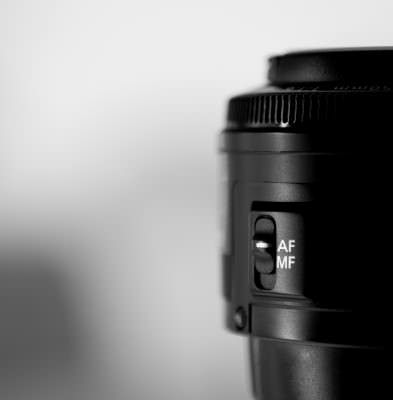 Autofocus has been around for a few decades now, and it’s at least worth mentioning that it changed the process of taking photos for the photographer greatly. It makes everything easier, more accurate, faster and the list could go on. Autofocus has helped us produce tack sharp images at incredible speeds, yet it has numbed our senses to some extent. At least for those of us who used to shoot manual film cameras at one point. Manual focus on a DSLR isn’t the easiest thing, I’ll admit it. However, I believe there are some situations when using it can be better than letting the camera do everything by its own mind. Her they are.
Autofocus has been around for a few decades now, and it’s at least worth mentioning that it changed the process of taking photos for the photographer greatly. It makes everything easier, more accurate, faster and the list could go on. Autofocus has helped us produce tack sharp images at incredible speeds, yet it has numbed our senses to some extent. At least for those of us who used to shoot manual film cameras at one point. Manual focus on a DSLR isn’t the easiest thing, I’ll admit it. However, I believe there are some situations when using it can be better than letting the camera do everything by its own mind. Her they are.
1. Low light
Even the most advanced cameras and lenses have trouble shooting in very low light conditions. It gets frustrating to see the autofocus struggling to lock on to something and failing to do so almost every time. Time to switch to manual, pick the brightest spot in the frame and adjust until it’s clear in the viewfinder.
2. Glass and windows
Photographing through a glass surface can be very confusing for a camera that’s set to do everything on its own. Reflections, glare, dirt and other factors usually make it focus at the wrong distance. Shifting to manual will get you full control of shooting through glass, and windows. Photographing through plane windows is one of the best examples in this case.
3. Macro shots
The narrow depth of field in macro photography leaves almost no room for error in focusing. Relaying on the camera to select the optimum portion of the frame can often lead to missed shots, as it only takes marginal distance errors to screw things up. It’s best to use a tripod when focusing manually for macro shots. Not only will it give you stability, it will also slow you down and make you see things better.
5. Portraits
Autofocus generally does a great job at portraits, but there are exceptions. When photographing someone’s face, the eyes are the most important part that needs to be in focus, and the camera can sometimes get it wrong and focus on the nose or near the ear. Manually focusing will enable full control.
The thing to remember about using manual focus on a DSLR is that it’s different from what it was like on manual, analog cameras. Those were equipped with a matte glass element specifically for accuracy. It might be frustrating at first, and you will often miss focus, but as with everything else, practice makes perfect. Besides better dealing with the situations above, it also helps to remember that there are some amazing vintage manual focuses lenses on the market. They are incredible for video and generally do a fantastic job at photography as well. It would be a shame to limit yourself only the plastic kit lens your camera came with. Most of these manual focus lenses are pretty cheap compared to a high quality “digital” lens, but the optical performance isn’t really that
Also Read: THE SEVEN BEST FOCAL LENGTHS FOR PORTRAITS
Recommended Reading:
- 2013 Photographer's Market: The Most Trusted Guide to Selling Your Photography
- How to Create Stunning Digital Photography
- Best Business Practices for Photographers
- The Fast Track Photographer Business Plan: Build a Successful Photography Venture from the Ground Up
- Group Portrait Photography Handbook
- 500 Poses for Photographing Women
- The Best of Family Portrait Photography: Professional Techniques and Images
- 500 Poses for Photographing Group Portraits
- Selling Your Photography: How to Make Money in New and Traditional Markets
- Starting Your Career as a Freelance Photographer
- Photographer's Survival Manual: A Legal Guide for Artists in the Digital Age
- Legal Handbook for Photographers: The Rights and Liabilities of Making Images
- Taking Stock: Make money in microstock creating photos that sell
- Going Pro: How to Make the Leap from Aspiring to Professional Photographer
